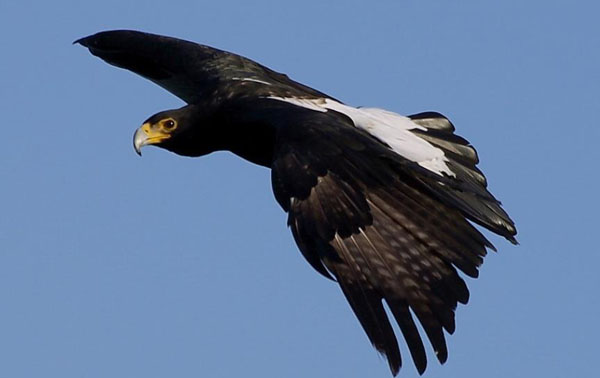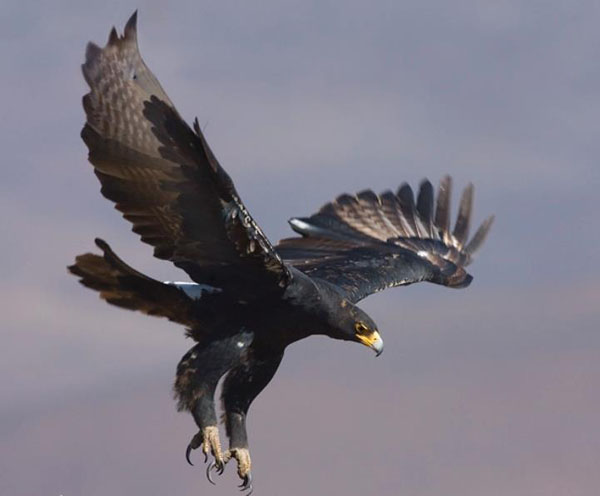Aquila verreauxii
IUCN
LCBasic Information
Scientific classification
- name:Aquila verreauxii
- Scientific Name:Black carving, flower carving, small flower soap carving
- Outline:Raptor
- Family:Accipitriformes Accipitridae Aquila
Vital signs
- length:90cm
- Weight:3000-5800g
- lifetime:20year
Feature
The plumage is glossy black, with white rump and lower back.
Distribution and Habitat
Distributed in tropical Africa and the Palearctic, from Israel, southeastern Arabia, Egypt (Sinai), southern Chad and western Sudan, south through Ethiopia, Somalia and Kenya to South Africa.
Inhabits woodlands near grasslands and wetlands, prefers canyons, rocky foothills and mountains, and is more common in arid areas than grassland and woodland vegetation types. Frequented in river valleys, rocky outcrops and ledges, hillocks, hills and mountains, the species occurs mainly in non-tropical areas, but on the edge of the Palearctic, 30°N to 35°S. Found in areas with less than 750 mm of annual rainfall, with an altitude distribution from sea level to mountainous areas above 5000 meters. Perched on conspicuous lookouts, usually seen in pairs, soaring along rock walls or higher.
Appearance
The black eagle's body feathers are dark chestnut brown with a metallic sheen on the back. The upper and lower tail coverts are decorated with white and brownish white, the toes are yellow, and the claws are black. The bill is dark brown, and the nostrils are round, which is different from other species.
Except for the white hips and lower back, all feathers are bright black. There are two fairly wide white "bands" starting from the base of the neck, covering part of the shoulders and connecting with the white part on the back, forming a clearly visible "V" shape when the black eagle strikes a certain posture. The wing tips are white. This feature is only really noticeable when its wings and body are fully spread.
Details
The black eagle is a species of the genus Accipitridae. It often inhabits woodlands near grasslands and wetlands, and often hunts in flight or on the ground, preying on animals such as hyraxes, guinea fowls, monkeys, and hares. It builds nests on alpine rocks or trees, using branches and bark to build a dish. Each nest lays 1-3 eggs, usually 2 eggs. The eggs are pale white and have an incubation period of 42-44 days.

The black eagle is larger and has fewer stripes than the tawny eagle, and shares more or less the same range with the tawny eagle in East Africa. The plumage of the young birds is a mixture of red, brown, and black. Black eagles are resident birds and will hunt cooperatively in pairs, although some very localized movements may occur within the network of hills that make up most of their habitat. They hunt in flight or on the ground. The species inhabits remote, mountainous, rocky areas, as well as savannas and semi-deserts, anywhere rock hyraxes occur in large numbers. Throughout most of its range, its abundance is highly correlated with the density of hyraxes.

More than 60% of the black eagle's prey is hyraxes, but it will occasionally take other mammals, birds, tortoises, and rarely reptiles. Like all predators with nearly exclusive or equally undiverse diets, once hyrax resources are depleted, their survival will be threatened by years of poor reproduction.
Despite the risks posed by its diverse diet, the black eagle is not an endangered species. It is relatively common in its suitable habitat, especially in South Africa. The species population is estimated to be in the tens of thousands. Trend proof: As of 2016, the species is considered stable with no evidence of decline or major threats.








